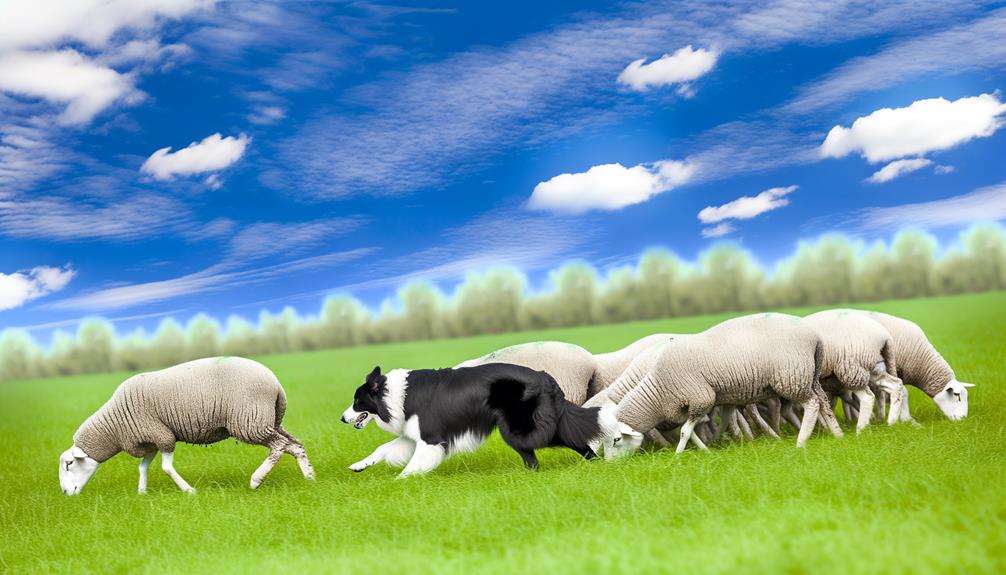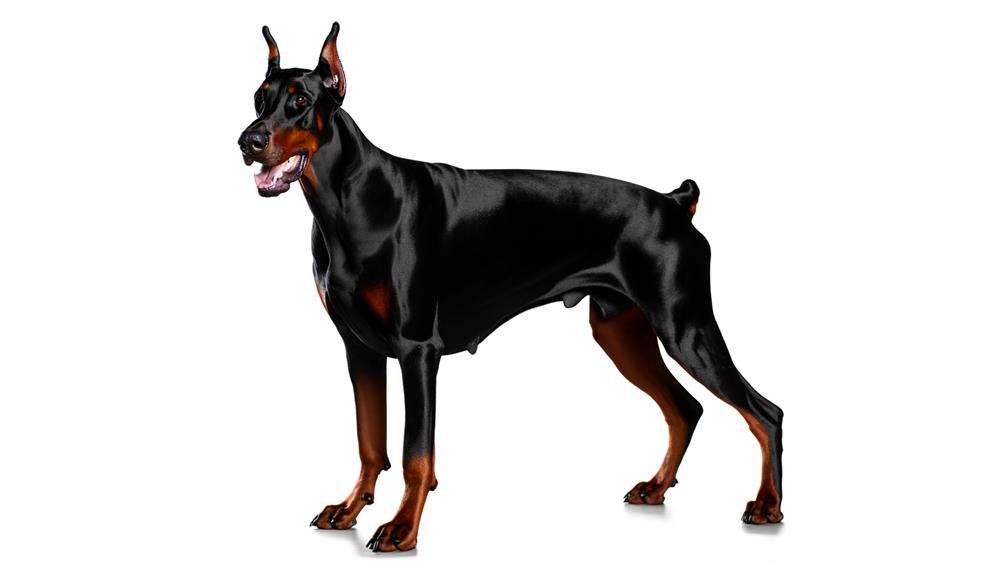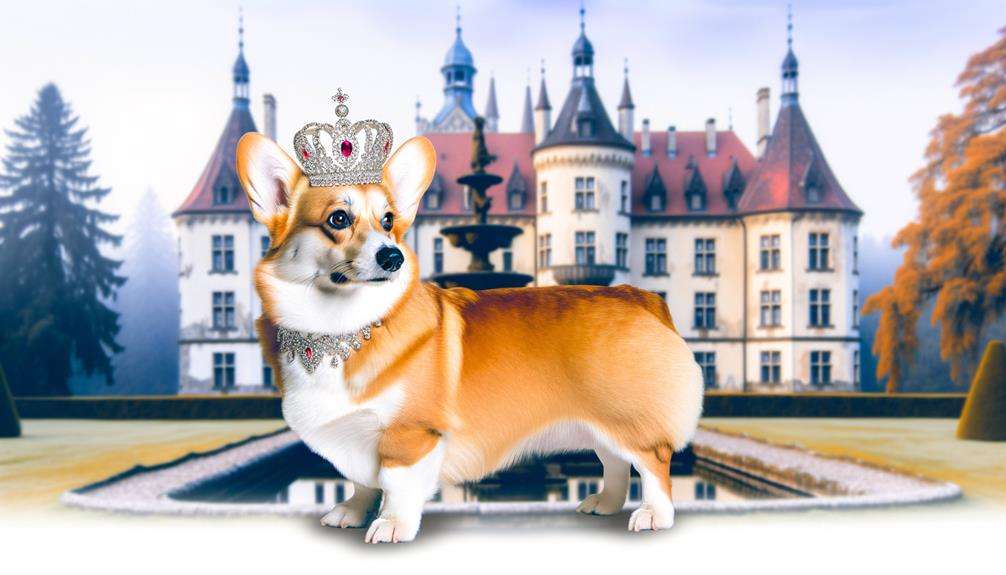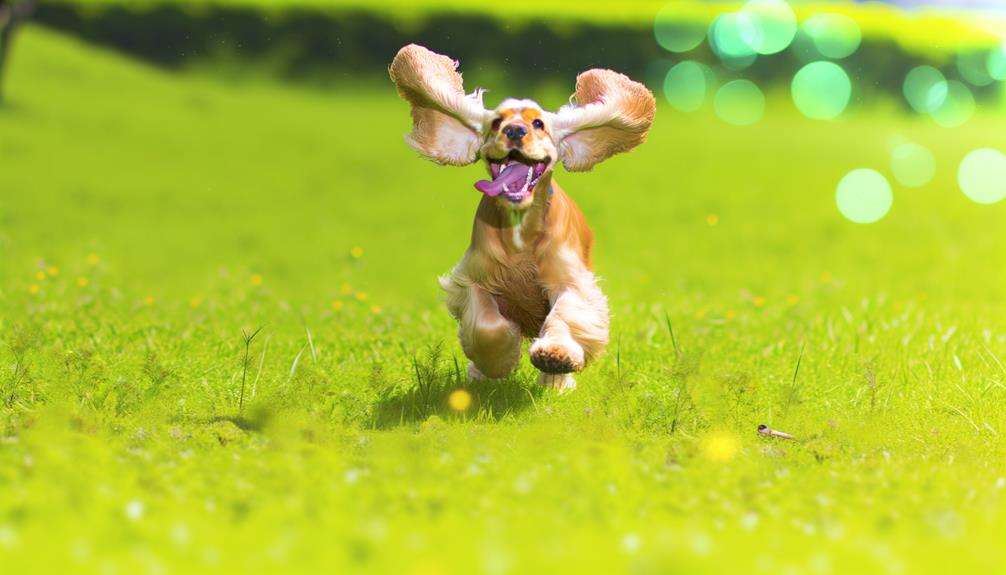Looking for the perfect large dog breed for your first-time ownership? Look no further!
In this article, we'll guide you through the top choices that are sure to make a great addition to your family. From the friendly and loyal Golden Retriever to the intelligent and playful Labrador Retriever, we've got you covered.
Get ready to discover the best large dog breeds that will bring joy, love, and companionship into your life.
Let's dive in!
Key Takeaways
- Golden Retrievers and Labrador Retrievers are friendly and gentle dogs that are relatively easy to train with positive reinforcement techniques. However, they are prone to health issues and require regular vet visits, a balanced diet, and exercise for their well-being.
- German Shepherds require consistency and positive reinforcement in training, and it is important to establish clear boundaries and expectations as the pack leader. They also benefit from regular exercise for their physical and mental stimulation. Consulting with a professional trainer or behaviorist can provide personalized advice.
- Boxers are playful and energetic dogs that respond well to positive reinforcement training methods. Consistency and patience are key in training them. They are prone to certain health issues and require regular vet check-ups and exercise for their overall health.
- Bernese Mountain Dogs are gentle and affectionate dogs that respond well to positive reinforcement training methods. They have a moderate to high energy level and require daily exercise. Their thick double coat requires regular brushing and they can shed heavily. They are known for their calm and patient temperament, making them great for first-time owners.
Golden Retriever
If you're considering getting a dog for the first time, a Golden Retriever would be an excellent choice. Golden Retrievers are known for their friendly and gentle nature, making them great companions for families and individuals alike.
One of the most important aspects of owning a Golden Retriever is maintaining their health. These dogs are prone to certain health issues such as hip dysplasia, heart problems, and cancer. Regular visits to the vet, a balanced diet, and plenty of exercise are crucial for keeping your Golden Retriever healthy.
In addition to health, training a Golden Retriever is essential to ensure they're well-behaved and obedient. Golden Retrievers are intelligent and eager to please, making them relatively easy to train. Positive reinforcement techniques work best with these dogs, as they respond well to praise and rewards. Consistency and patience are key when training a Golden Retriever, as they can be easily distracted. It's important to start training from a young age and continue it throughout their lives to reinforce good behaviors.
Labrador Retriever
When considering the best large dog breeds for first-time owners, the Labrador Retriever stands out for its friendly and gentle nature, just like the Golden Retriever. Labrador Retrievers are known for their excellent health and overall robustness. However, like any other breed, they're prone to a few common genetic conditions that owners should be aware of.
Some of these health issues include hip and elbow dysplasia, which can cause joint pain and mobility problems. Labrador Retrievers are also prone to obesity, so it's important to provide them with a balanced diet and regular exercise to maintain a healthy weight.
To ensure a well-behaved and obedient Labrador Retriever, it's essential to provide them with proper training. Labrador-specific training techniques can be highly effective in shaping their behavior. Positive reinforcement, such as treats and praise, is often the most successful approach. Consistency is key when training a Labrador Retriever, as they thrive on routine and clear expectations. It's important to establish yourself as the pack leader early on and set boundaries and rules that are consistently enforced.
German Shepherd
When it comes to training German Shepherds effectively, consistency and positive reinforcement are key. These intelligent and loyal dogs thrive on learning new commands and tasks.
It's important to establish yourself as the pack leader and provide clear boundaries and expectations. Regular exercise is also essential for German Shepherds to keep them physically and mentally stimulated. Daily walks, playtime, and activities such as obedience training or agility courses can help meet their exercise needs.
Remember to always consult with a professional trainer or behaviorist for personalized advice and tips specific to your German Shepherd.
Training German Shepherds Effectively
To effectively train a German Shepherd, you must establish clear and consistent rules from the beginning. This breed is highly intelligent and eager to please, making them excellent candidates for training. However, they can also be strong-willed and require a firm but gentle approach.
Here are some effective training methods for German Shepherds:
- Positive reinforcement: Use rewards such as treats and praise to reinforce desired behaviors.
- Consistency: Be consistent with commands, expectations, and consequences to avoid confusion.
- Socialization: Expose your German Shepherd to different people, animals, and environments to help them develop good social skills.
- Mental stimulation: Provide mental challenges such as puzzle toys and obedience training to keep them engaged and prevent boredom.
Common behavioral issues in German Shepherds include aggression, separation anxiety, and excessive barking. With proper training and guidance, these issues can be addressed and managed effectively. Remember to be patient, consistent, and provide plenty of positive reinforcement to ensure a well-behaved and happy German Shepherd.
Exercise Requirements and Tips?
Establishing clear exercise requirements and tips is crucial for ensuring the physical and mental well-being of your German Shepherd. These intelligent and active dogs require regular physical activity to prevent boredom and maintain their overall health.
A German Shepherd should engage in at least 30 minutes to 2 hours of exercise daily, depending on their age, health, and energy level. Incorporating exercise routines such as long walks, jogging, fetch, and obedience training can help meet their exercise needs.
Interactive toys, such as puzzle toys and treat-dispensing toys, can also provide mental stimulation during playtime. Additionally, involving your German Shepherd in agility training or dog sports can be a great way to challenge their physical and mental abilities.
Remember to consult with your veterinarian to determine the most suitable exercise routine for your German Shepherd's specific needs.
Boxer
If you're a first-time owner looking for a large and active companion, a Boxer may be the perfect choice for you. Boxers are known for their playful and energetic nature, making them great for families and individuals who enjoy an active lifestyle.
Here are some key points to consider when it comes to training techniques and common health issues for Boxers:
- Training Techniques: Boxers are highly intelligent dogs and respond well to positive reinforcement training methods. Reward-based training, using treats and praise, can be effective in teaching them commands and good behavior. Consistency and patience are key when training a Boxer, as they can be stubborn at times. It's also important to start training early to establish good habits and prevent any behavioral issues.
- Common Health Issues: Boxers are generally healthy dogs, but like any breed, they're prone to certain health issues. Some common health problems that Boxers may experience include hip dysplasia, heart conditions, and certain types of cancers. Regular vet check-ups and a nutritious diet can help prevent and manage these health issues. It's also important to provide regular exercise to keep them physically fit and maintain a healthy weight.
Bernese Mountain Dog
When it comes to temperament and trainability, the Bernese Mountain Dog is a breed that excels. Known for their gentle and affectionate nature, they're eager to please and respond well to positive reinforcement training methods.
In terms of exercise and energy level, they're a moderate to high energy breed that requires daily exercise to keep them happy and healthy.
Lastly, grooming and shedding are considerations for potential owners as the Bernese Mountain Dog has a thick double coat that requires regular brushing and can shed heavily, especially during shedding seasons.
Temperament and Trainability
To ensure a successful experience as a first-time owner, you can rely on the Bernese Mountain Dog's gentle and trainable nature. This large breed is known for its calm and patient temperament, making it an excellent choice for families and individuals alike.
Here are some key points to consider about the Bernese Mountain Dog's temperament and trainability:
- Trainability: The Bernese Mountain Dog is highly trainable and eager to please, making it easier to train compared to small dog breeds. With consistent positive reinforcement and early socialization, these dogs can quickly learn commands and behaviors.
- Temperament in different environments: Despite their large size, Bernese Mountain Dogs have a sweet and friendly disposition. They're generally good-natured and get along well with children, other pets, and strangers. However, it's essential to provide them with proper socialization and training to ensure they remain well-behaved in different environments.
- Adaptability: Bernese Mountain Dogs are adaptable and can thrive in various living situations, including apartments or houses with yards. However, they do require regular exercise to keep them physically and mentally stimulated.
- Gentle nature: One of the standout traits of Bernese Mountain Dogs is their gentle and affectionate nature. They're known to be excellent companions and are often described as gentle giants.
Exercise and Energy Level
Continuing the discussion on the Bernese Mountain Dog's temperament and trainability, let's explore their exercise and energy level.
As a large breed, Bernese Mountain Dogs have moderate exercise requirements. They benefit from daily exercise to keep them physically and mentally stimulated. Despite their size, they aren't overly energetic and are generally content with a moderate amount of exercise. Taking them for regular walks or engaging in playtime in a fenced yard can help meet their exercise needs.
It's important to note that they shouldn't be overexerted, especially when they're puppies or during hot weather. Daily exercise for small dogs like the Bernese Mountain Dog has various benefits, including weight management, cardiovascular health, and overall well-being. It also helps prevent behavioral issues that may arise from pent-up energy.
Therefore, incorporating regular exercise into their routine is essential for their overall health and happiness.
Grooming and Shedding
Maintaining the grooming needs of a Bernese Mountain Dog can be easily managed with regular brushing and occasional bathing. This breed has a thick, double coat that requires regular attention to keep it looking its best. Here are some grooming and shedding tips for your Bernese Mountain Dog:
- Brush your dog's coat at least once a week to remove loose hair and prevent matting. Use a slicker brush or a comb with wide teeth to reach through the dense fur.
- Pay special attention to the areas behind the ears, under the armpits, and around the tail where tangles are more likely to occur.
- Bathe your Bernese Mountain Dog every few months or as needed. Use a dog-specific shampoo and conditioner to keep the coat clean and healthy.
- Be prepared for heavy shedding during the spring and fall seasons. Regular brushing will help minimize the amount of loose hair in your home.
Great Dane
If you're a first-time owner looking for a large dog breed, consider the Great Dane. The Great Dane is a majestic and gentle giant that makes a wonderful companion. Despite their size, Great Danes are known to be friendly, patient, and great with children.
When it comes to exercise requirements, Great Danes are surprisingly low-maintenance. While they do need regular exercise to keep them healthy and happy, they don't require intense physical activity like some other large breeds. A daily walk or play session in the yard is usually enough to meet their exercise needs.
However, it's important to note that Great Danes are prone to certain health concerns. One common health issue in Great Danes is bloat, a condition where the stomach fills with gas and becomes twisted. This can be a life-threatening emergency and requires immediate veterinary attention. Other health concerns to be aware of include hip dysplasia, heart disease, and certain types of cancer. Regular veterinary check-ups, a balanced diet, and proper exercise can help prevent or detect these issues early on.
Newfoundland
To continue our exploration of the best large dog breeds for first-time owners, let's now turn our attention to the Newfoundland. This gentle giant is known for its friendly nature and calm demeanor, making it an excellent choice for families and individuals alike.
Here are some important factors to consider when it comes to owning a Newfoundland:
- Health concerns and lifespan: Newfoundland dogs are generally healthy, but they're prone to certain health issues such as hip and elbow dysplasia, heart conditions, and obesity. Regular exercise, a balanced diet, and routine vet check-ups are essential to ensure their well-being. With proper care, Newfoundlands can live an average of 8 to 10 years.
- Training and socialization: Newfoundlands are highly intelligent and eager to please, making them relatively easy to train. Early socialization is crucial to ensure they grow up to be well-behaved and confident dogs. Start training from a young age and expose them to different environments, people, and animals to help them develop good manners and become comfortable in various situations.
- Exercise and grooming: Despite their size, Newfoundlands aren't overly active dogs. Regular moderate exercise, such as daily walks or swimming, is sufficient to keep them healthy and happy. However, their thick double coat requires regular brushing to prevent matting and to keep it clean and shiny.
- Temperament and family compatibility: Newfoundlands are known for their gentle and patient nature, making them great companions for families with children. They're also known to be protective and devoted, making them excellent watchdogs. Their calm demeanor and adaptability make them suitable for both apartment living and spacious homes with yards.
Saint Bernard
The Saint Bernard is a lovable and loyal companion for first-time owners. This gentle giant is known for its massive size and kind temperament.
When it comes to grooming, the Saint Bernard has moderate requirements. Their thick, dense coat needs regular brushing to prevent mats and tangles. Pay special attention to their ears, as they're prone to infections. Additionally, their droopy jowls should be wiped daily to prevent drool buildup and potential skin irritations.
As for health issues, Saint Bernards are prone to certain conditions such as hip and elbow dysplasia, heart problems, and bloat. Regular vet check-ups and a balanced diet can help mitigate these risks. Exercise is also important to prevent obesity, but keep in mind that the Saint Bernard shouldn't be overexerted due to its large size.
Frequently Asked Questions
Are Large Dog Breeds Suitable for Apartments or Small Living Spaces?
Large dog breeds may not be suitable for apartments or small living spaces due to their size and energy levels. They require ample space to roam and exercise. Consider smaller breeds that are better suited for limited living environments.
How Much Exercise Do Large Dog Breeds Need on a Daily Basis?
Large dog breeds require a significant amount of exercise on a daily basis to stay healthy and happy. Socialization is vital for their well-being, and mental stimulation can be achieved through interactive toys, puzzles, and training exercises.
Do Large Dog Breeds Require Special Grooming or Maintenance?
Large dog breeds do require special grooming and maintenance. Regular brushing, nail trimming, and bathing are necessary to keep their coats clean and free of mats. Additionally, they may need professional grooming to maintain their appearance.
Are Large Dog Breeds Prone to Any Specific Health Issues?
Large dog breeds are prone to specific health issues such as hip dysplasia and bloat. Regular vet check-ups, proper nutrition, and exercise are vital for preventing these problems. Don't neglect your furry friend's well-being.
What Are Some Common Training Challenges That First-Time Owners May Face With Large Dog Breeds?
House training and leash pulling are common training challenges that first-time owners may face with large dog breeds. It's important to establish a consistent routine and use positive reinforcement techniques to address these issues effectively.
Conclusion
In conclusion, when it comes to choosing a large dog breed for first-time owners, the Golden Retriever, Labrador Retriever, German Shepherd, Boxer, Bernese Mountain Dog, Great Dane, Newfoundland, and Saint Bernard are all excellent options.
These breeds possess the perfect combination of size, temperament, and loyalty that make them suitable for inexperienced owners. Additionally, they're known for their intelligence, trainability, and affectionate nature, making them ideal companions for individuals or families looking to add a large furry friend to their lives.






